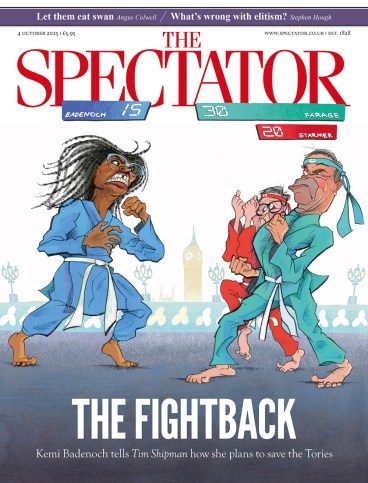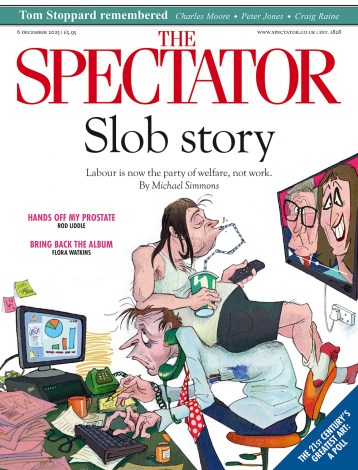
It amuses me that the two main parties most averse to the idea of honours, monarchy, chivalry etc are led by knights – Labour by Sir Keir Starmer and the Liberal Democrats by Sir Ed Davey. This is entirely fitting, since they accurately reflect the dominant Blob establishment world-view and so were rewarded by being made Sir rather than staying plain Mr Blobby. But I wonder if the title has electoral disadvantages. Some voters must be subliminally more annoyed by Sir Somebody telling them to be radical, make sacrifices, save the planet and not to be racist than they would be by an untitled politician. On the other hand, it looks as though Sir Tony Blair, a Knight of the Garter, may soon be ruling in Gaza, at the orders of the Emperor Donald. The last time such a top-rank English knight tried to run parts of the Holy Land was probably when William Marshal, Richard the Lionheart’s ‘Greatest Knight’, helped capture Acre in 1191. That Crusade was a brave effort but ultimately failed.
As a boy, I felt inspired by Jan Struther’s hymn, ‘When a knight won his spurs, in the stories of old’. ‘He was gentle and brave,’ some readers may recall, ‘he was gallant and bold/ With a shield on his arm and a lance in his hand,/ For God and for valour he rode through the land.’ The imagined hymn-singer goes on: ‘No charger have I’ (though I did have my pony, I reflected), ‘and no sword by my side,/ Yet still to adventure and battle I ride,/ …/ Let faith be my shield and let joy be my steed/ ’Gainst the dragons of anger, the ogres of greed;/ And let me set free with the sword of my youth,/ From the castle of darkness, the power of the truth.’ Poor Sir Keir did try, when addressing his party conference on Tuesday, to wave the sword of his late middle age around against Reform’s ‘castle of darkness’, and was gallanter and bolder than ever previously seen. But faith was never his shield and if joy was ever his steed, events now threaten to unhorse him.
One political knight who really was rather knightly was Menzies Campbell, the former leader of the Liberal Democrats, who died last week. Perhaps his short-lived leadership of his party was also weakened by the fact that he, like Sir Ed, had already been knighted when he took the post. ‘Ming’ Campbell looked the part, however, being well-built, tall, handsome and smartly dressed. He had been an Olympic athlete in his youth. He comported himself rightly too – courteous, gentle and rather too stately in political debate to be much good at House of Commons rough stuff. To me, he seemed a walking advertisement for the type of Scottish culture which once produced so many distinguished soldiers, engineers, lawyers (he was a QC/KC) and pro-consuls. Ming could almost have passed for an old-school centrist Tory MP from south of the border, but he was distinctively Scottish, and not only in accent and name. From quite a poor background, he rose through the then-great Scottish education system, and reflected the values of the Scottish enlightenment, the ideal figure to end up as chancellor of the University of St Andrews. His Britishness in no way detracted from his Scottishness. The SNP has successfully exiled people like Ming Campbell from their national culture, so there may be no more such knights.
The deadline for the National Trust AGM approaches (10 October is the latest to request the paper AGM booklet; 31 October for online and postal voting). The oddest thing about this year’s AGM is the vast number of candidates for election to the NT council. Typically, in the past, there have been about 40 candidates. This time, although membership is falling, there are about 200. According to Restore Trust, the organisation which tries to hold the NT to its statutory duties, the situation resembles that of recent Canadian politics. There, a pressure group called the Longest Ballot Committee floods targeted ballots with names – 214 in a recent by-election – to damage candidates they do not like. One victim was the then Conservative leader Pierre Poilievre. So NT members who understandably cannot be bothered to read all candidates’ statements may give up. This hands a strong advantage to NT management’s favoured candidates, because the NT’s ‘quick vote’ system offers one button which grants everything management wants. Restore Trust has its own candidates for the vacancies. They are: Alka Sehgal Cuthbert, Anthony Mealing, Bijan Omrani, David Wyatt, Georgia Cristea, Lawrence Goldman and Patrick Streeter.
The Welsh government has announced a website on which people can record Welsh place-names which do not appear on online maps. This is a worthy enterprise, but it is also needed for English place-names. GPS, what3words and the like reduce the practical need for place-names, so some will be forgotten. Lest I forget, I am searching my memory for the names of all the fields and woods on the farm on which I was brought up. These include the Forstal, the Old Hopgarden, the Maids’ Hopgarden, the Lavox Shaw, the Duck’s Hall Shaw, the Glebe Field, the Home Mead, the Parson’s Petes. Almost all these names have easily discernible meanings – though my quest for Lavox is not satisfied by AI’s claim that it is ‘a Vietnamese haircare product’ – but if they were forgotten it would be much harder for future generations to work out what happened where. There are more than 200,000 farm holdings in Britain and therefore millions of field, wood and hill names. Names contain vital historical clues, but we usually think little about them. For example, people often do not realise that a place whose name ends in ‘-bridge’ or ‘-ford’ must almost certainly have a river running through it. (This is not necessarily true in the United States because names are often taken from ours. There is no river, for instance, in Oxford, Mississippi.)










Comments